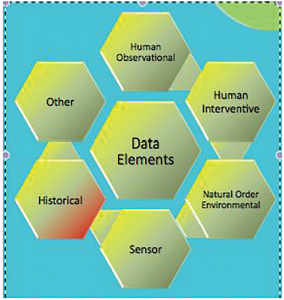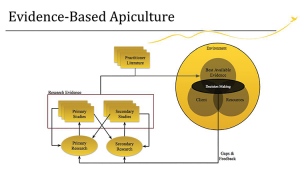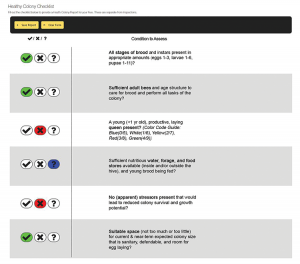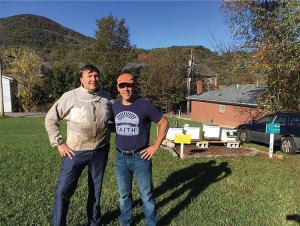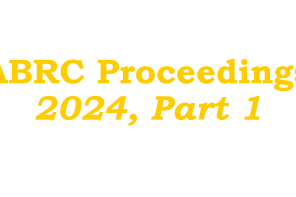Click Here to Get Hive Tracks 14 Day Free Trial - Use Promo code BEECULTURE
By: Joseph Cazier
The Genius hive will be able to tell you what it needs to do better.
Introduction
Many of the changes we are witnessing in the world today are driven by advances in technology. These technological changes are also coming to the beekeeping world. If you look at the changes that have already taken place and the seeds of what has started them, it is possible to make a good prediction of what is likely to happen in the future and how it will affect the beekeeping community and industry.
My colleagues James Wilkes, Ed Hassler and I made such a prediction this summer during a webinar on the Kim and Jim show jointly sponsored by Project Apis m and Bee Culture Magazine (Smarter Hives, Healther Bees, June 23, 2017 @ https://www.beeculture.com/kimandjimshow/). In that webinar, and at a few presentation since, we outlined the path we are on to what we are calling a Genius Hive. This article summarizes and extends some of the key points we made during those presentations and adds context for today’s thoughtful beekeeper.
The Smart Hive
One of the most talked about new technologies in beekeeping is a smart hive. For us, a smart hive is a hive that can tell you about itself. That is, it can send information, often digitally, about what is going on in the hive. Typically, this type of information includes:
- Hive Weight
- Temperature
- Humidity
- Sounds
- Images
Companies like Arnia, Solution Bee, and Broodminder, as well as others, are making good progress at building a smart hive that can record and transmit this type of data. This is a significant and necessary step in the right direction and we cheer for their success. My friend, Frank Linton, tracks the progress on the development and use of these sensors on his informative website, colonymonitoring.com.
While these actions are very important, this article is not about the smart hive; rather it is about how the smart hive is a progressive step towards building a genius hive. Since more people are familiar with the concept of the smart hive, the rest of this article will focus on how the smart hive can lead us to the genius hive.
The Genius Hive
A genius hive would be able to do everything that a smart hive does; however, it would go a step farther. Rather than just transmitting data about the current state of the hive, the genius hive would be able to tell you what the hive needs to perform better than it does today. It would take all of the data collected from a smart hive, combine it with knowledge of best management practices and data from thousands of other hives, and use machine learning and artificial intelligence techniques to optimize colony health, production, and pollination performance.
Here are a few things a genius hive would be able to do:
- Monitor the hive for signs of trouble and send alerts before trouble hits
- Monitor regional and national trends in real time and adjust for how those trends might affect your bees
- Suggest ways to improve your production, pollination, or bee health
- Prescribe the best management practices customized for a particular hive in a particular place at a particular time
- Preemptively suggest treatments before trouble manifests, or when you can forgo a specific action
- Identify the treatments most likely to succeed given your hive characteristics, current environmental conditions, and history
I think most of us would agree that having a genius hive could be beneficial to our beekeeping decision making process. The question is, how do we go from where we are today to where we could be in the future with a genius hive?
The Path to a Genius Hive
The first thing to understand about a genius hive is that it cannot be built in isolation. No single hive or beekeeping operation will ever have enough data, on its own, to build a competent genius hive. The genius hive can only be built as part of an Intelligent Apiary Management System. This is a collection of hardware, software, knowledge, and years of standardized data that has been mined for best management practices, which can then be applied to each unique type of condition a given hive may face.
In the next sections, I will outline, in four steps, how we can put all these pieces together to build a genius hive.
Step One – Develop and Adopt a Universal Data Standard
To have a genius hive, we need the assistance of machine learning and analytics. The application of these techniques are only viable when there is access to very large data sets of sufficient volume and quality; crunching the numbers of these large data sets enables us to then trust the results. To accomplish this, it will take all of the data from all of us.
However, most of us keep very poor records of our beekeeping operations. In fact, in a survey we conducted with the help of Bee Culture, 74% of 693 respondents admitted to not using any type of inspection form to record their observations when they inspected their hives. Even for those who kept records, the data would still need to be transcribed digitally, shared, and converted to a standard format that could be combined with data from other beekeepers in other micro-climates with different genetic stock and conditions to take advantage of the true power of machine learning.
Yet progress is being made in the development of a data standard. For example, Dick Rogers, manger of bee health research at the Bayer Bee Care Center, has developed and released the Healthy Colony Checklist (https://beehealth.bayer.us/who-can-help/beekeepers/healthy-colony-checklist) as a comprehensive and standardized way to record data from hive inspections. In a future article, I plan to share more information about how we are testing, refining, and validating this framework as a candidate for a data standard for human observational (inspection) data. In the meantime, we have adapted a portion of our software at hivetracks.com to allow beekeepers to record data using this standard framework so we can further test and refine its usefulness and applicability as a part of a bigger data standard.
Another visionary working in this area is Walter Haefeker, President of the European Professional Beekeeping Association and thought leader behind the concept of BeeXML, which is a way to share data between and among beekeepers worldwide. Walter was the key driver in the formation of an Apimondia working group called “Standardization of data on bees and beekeeping,” of which I am honored to be a member. The goal of this working group is to engage beekeepers, vendors, and researchers to develop an international standard for the collection, transmission, and storage of data related to bees and beekeeping. This will enable us to collect the type of data at the scale necessary that we need to build a genius hive.
Step Two – Identify and Validate Best Management Practices
The next step is to identify and validate best management practices. There is a fair amount of work being done in this area with the data and tools we have now. Much more will be possible when we have access to large quantities of high quality data. In addition to some of the work you may have heard about from leaders in this area, such as the Bee Informed Partnership (BIP), Project Apis m., the Pollinator Stewardship Council, I want to share a little about our efforts to date.
One of the projects I am most excited about is being conducted by my colleague Ed Hassler. Dr. Hassler is using his background in artificial intelligence programming techniques to build an intelligent agent that is reading tens of thousands of peer-reviewed journal articles and pulling out relevant nuggets of knowledge pertinent to beekeepers. Having this type of knowledge accessible to beekeepers around the world would be a great resource as we try to customize and optimize management for each individual hive. This research into Evidence-Based Apiculture would be a great leap forward in the development of a genius hive as it could encode a hundred years of high quality research into its decision and recommendation engines (see Fig. 2).
Step Three – Integrate Data Collection, Machine Learning, and Best Management Practices into an Intelligent Apiary Management System
The third step is putting all of the pieces together. Many of the parts are currently emerging, if somewhat in their embryonic state. We are collecting a fair amount of data through our hivetracks.com platform (see Fig. 3), which can be anonymized and used to build a better system to move beyond recording what happened in the past: it could guide beekeepers on what they can do now and in the future to enhance hive management.
We are continually learning about best practices in management, and the nuances of when one approach is better for a particular hive over another. As more people begin to keep hive records electronically in a standardized format, and share some of their data with the bee community, we will be able to put all the pieces together to build and grow a genius hive.
Step Four – Continually use and improve the system with additional data, insights and technology
The growth and development of the genius hive will never stop, and its performance will continue to improve year after year as more data is collected. We aim to share the insights learned from our efforts with the broader beekeeping community. Even more, we are hoping to partner with others who care about bees and have a piece of the puzzle to work together to build this Intelligent Apiary Management System. Beekeepers (both hobbyist and commercial), researchers, and vendors all have a role to play.
Closing Thoughts
Benjamin Franklin said, “An investment in knowledge pays the best interest.” If we accept this axiom, it follows that investing the time and resources to truly know your bees (HiveTracks Motto) will ultimately give us the knowledge we need to build a genius hive and improve the health and vitality of bees everywhere. Abraham Lincoln and Peter Drucker are both credited with saying, “The best way to predict the future is to create it.” Our goal is to create a future where the genius hive helps beekeepers everywhere to not only know their bees, but to know what the bees need to be the best they can be.
I hope to be able to write regular updates to this article, sharing our progress and the progress of others in this area in multiple venues. We hope you will follow this effort and join us in making the best future we can for ourselves and beekeepers everywhere. We welcome all to participate by sharing data, contributing knowledge and insight, and/or working to understand and apply what we are learning from the data we collect.
Finally, special thanks to Project Apis m. for supporting a portion of this work with a Healthy Hive 2020 grant. These efforts would not have been possible without visionary groups like this one providing support and resources.
Special thanks to my friends and colleagues James Wilkes, Ed Hassler, Dick Rogers and Brandy Hadley for our insightful conversations on this topic.
Joseph Cazier is the Chief Analytics Officer for HiveTracks.com and the Director of the Center for Analytics Research and Education at Appalachian State University. You can reach him at joseph@hivetracks.com.







